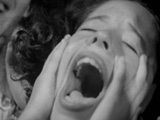
Film
COMMODIFIED CINEMA: Art, Advertising, and Commodities in Film
Tuesday, Dec 6, 2011
Noon
Participants
Introduced by Paul Clipson, filmmaker
Additional Info
- Adebar, Peter Kubelka, 1957, 2 min., 35mm, b&w, sound
- Schwechater, Peter Kubelka, 1958, 1 min., 35mm, color, sound
- Asu no Taiyo (Tomorrow’s Sun), Nagisa Oshima, 1959, 6 min., 35mm, ‘Scope, color, sound
- Lonely Boy, Wolf Koenig and Roman Kroitor, 1962, 26 min., 16mm, B&W, sound
- Les Statues meurent aussi (Statues Also Die), Alain Resnais and Chris Marker, 1953, 30 min., 35mm, B&W, French with English subtitles
- Dichtung und Wahrheit (Poetry and Truth), Peter Kubelka, 2003, 13 min., 35mm, silent, color
Image: Wolf Koenig and Roman Kroitor, Lonely Boy (still), 1962; courtesy of the National Film Board of Canada.
The Museum wishes to thank the following organizations for their generous assistance: the cultural services of the Consulate General of France in San Francisco, the National Film Center of The National Museum of Modern Art, Tokyo, Pacific Film Archive, Canyon Cinema and the National Film Board of Canada.
This program of short films by international filmmakers working in both commercial and experimental fields investigates the ways in which consumerism, product advertising, and commodification directly influence the social, political, and aesthetic histories of modern art and society. In some manner self-referential, subversive, or critical, these films serve to comment on and critique the very basis for their own creation, while also questioning the commercial practices of the film industry, television, and other forms of media of their time.
Peter Kubelka’s Adebar (1957) and Schwechater (1958), failed commercials to sell entertainment and beer, use intricate, metrically patterned sound and visual montages to create seminal works of avant-garde cinema. Nagisha Oshima’s subversive Asu no taiyo (Tomorrow’s Sun) (1958), created for the Shochiku studios in a style jarringly unlike the groundbreaking work he would become famous for, describes an opulently colored, widescreen, postwar Japan, with gangsters, singing cowboys, and girls starring in a fake trailer for the kind of film he would never make. Oshima’s short is both a perfect commercial for the “youth market” and an expert parody of one as well. Wolf Koenig and Roman Kroitor’s prescient Lonely Boy (1962) candidly and critically delves into the creation of teen pop-idol Paul Anka, where image, identity, and commerce blur to create an ideal model for the media personality. Chris Marker and Alain Resnais’ Les Statues meurrent aussi (Statues Also Die) (1953) is a critique of Western views on art, particularly related to the impact of French colonialism on African culture. Finally, Peter Kubelka’s Dichtung und Wahrheit (Poetry and Truth) (2003) studies a collection of takes from advertising footage, but, rather than finding a critical point, discovers unlikely poetry in the most banal of commercial moments.